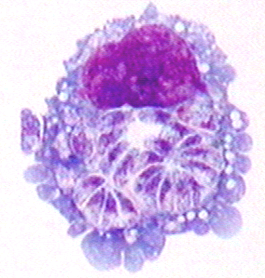Significant novel progress in Toxoplasma gondii infection was published in PNAS
Source: School of Life Sciences
Written by: School of Life Sciences
Edited by: Wang Dongmei
A research article entitled “Infection by
Toxoplasma gondii, a severe parasite in neonates and AIDS patients, causes impaired anion secretion in airway epithelia” was published online by PNAS (USA) on March 23, 2015. This work was done with a collaboration by Prof. Wen-Liang Zhou, Prof. Zhao-Rong Lun from the School of Life Sciences, Sun Yat-sen University and Prof. F.J. Ayala of University of California, Irvine, USA.
The important contribution of this article is to demonstrate that adenosine 5’-triphosphate (ATP)-induced Cl- secretion indicated the presence of a biphasic short-circuit current (
Isc) response which was mediated by a Ca2+-activated Cl- channel (CaCC). However, the ATP-evoked Cl- secretion in
T. gondii, a worldwide distribution human pathogen infected mouse tracheal epithelia, and the elevation of [Ca2+]i in
T. gondii-infected human airway epithelial cells, were suppressed. Quantitative RT-PCR revealed that the mRNA expression level of the P2Y2 receptor (P2Y2-R) increased significantly in
T. gondii-infected mouse tracheal cells. This revealed the influence that pathological changes in P2Y2-R had on the downstream signal, suggesting that P2Y2-R was involved in the mechanism underlying
T. gondii infection in airways. These results were considered to link
T. gondii infection as well as other pathogen infections to Cl- secretion, via P2Y2-R, suggesting that P2Y2-R is a potential target for understanding the pathogenesis caused by
T. gondii infection in airways. The finding that the P2Y2-R can be an essential target blocked by
T. gondii provides novel insights into the mechanism underlying host impairment caused by the infection with
T. gondii and other pathogens.
This is the fourth publication in this journal by Prof Zhao-Rong Lun’s group since 2008. In addition, Prof. Zhou and Prof. Lun’s group also published their significant progresses in Nature Medicine (2014) and The Lancet Infectious Diseases in the past few years respectively.
(
www.pnas.org/content/early/2015/03/18/1503474112.full.pdf)
Fig 1 A: ATP-P2Y2-R-PLC pathway

B: A mouse macrophage infected with Toxoplasma gondii